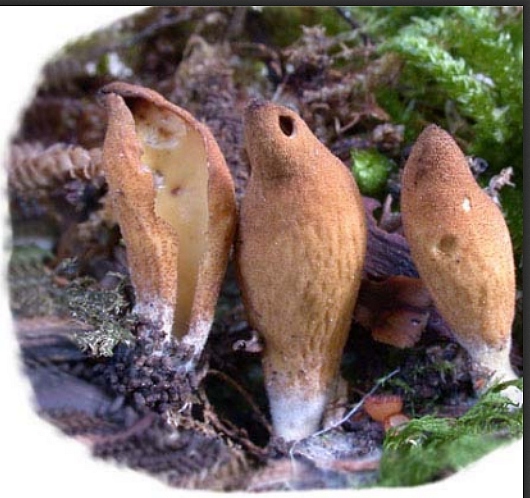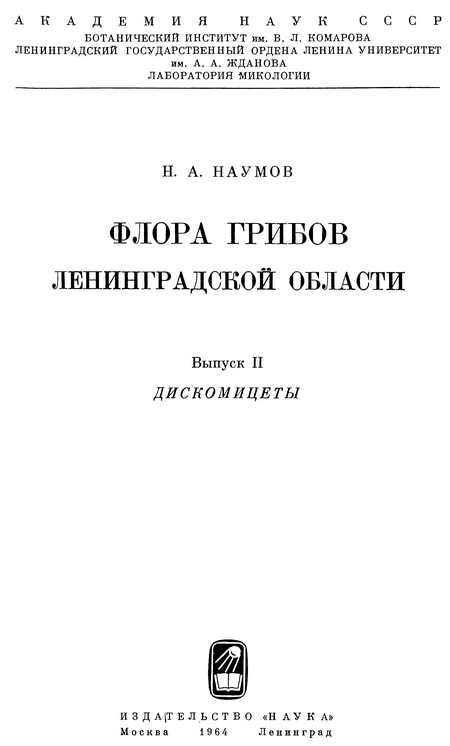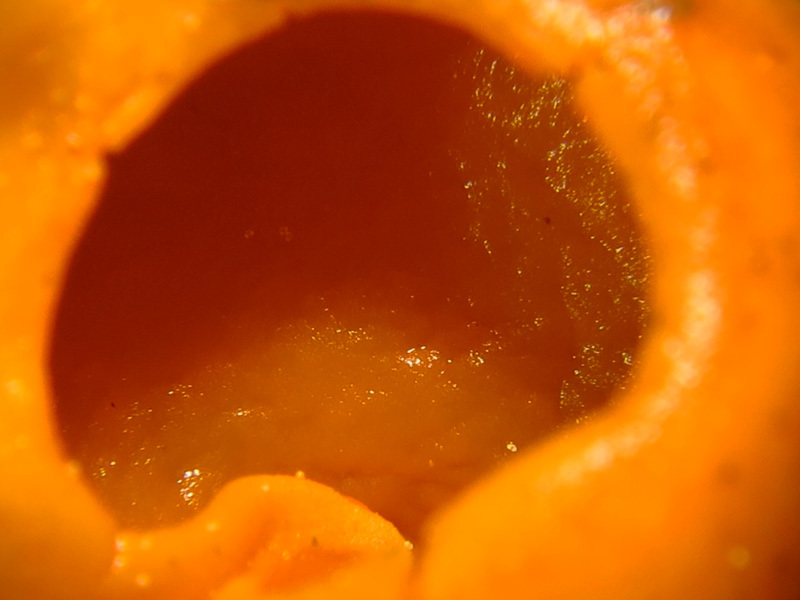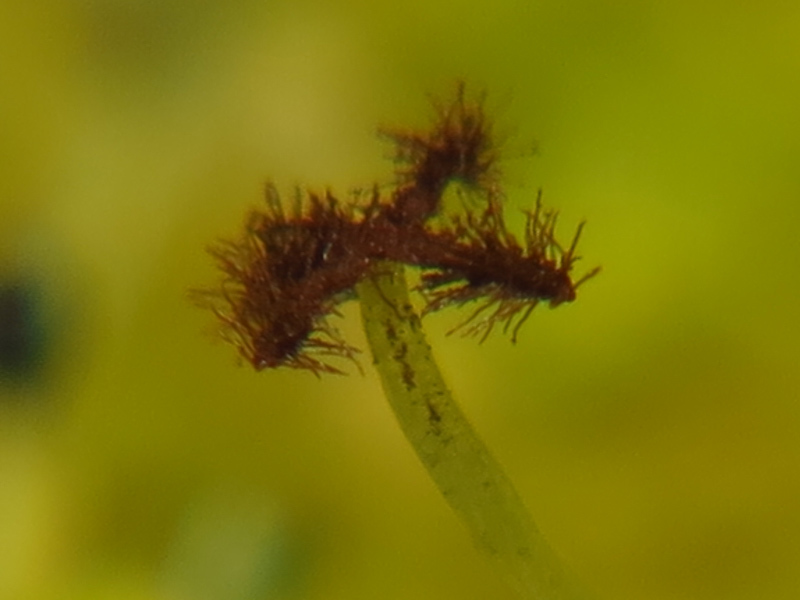Ponieważ dostałem e-mailową zgodę od Nicolas Van Vooren'a na umieszczenie na "bio-forum.pl" jego klucza do Otidea sp. - uchówka, więc zamieszczam.
Nigdy nie wiadomo, co będzie miało krótszy żywot w sieci; "ascofrance.com" czy "bio-forum.pl" ;-)
 Key of the species of the genus Otidea
Key of the species of the genus Otidea Version 0.1 – dec. 2008
Nicolas Van Vooren (
nicolas@vanvooren.info)
Preliminary note: 1) The shape of the spores is numbered to simplify the redaction into
the key:

2) The working names are placed between « » and they don’t have to be used, in a publication, as they are.
1. Ascoma cupuliform, not split on one side (or very exceptionally) ... 2
1. Ascoma cupuliform or ear-shaped, split or open laterally ... 3
2. Apothecia basely cupuliform, totally blackish; paraphyses forked at apex or with some outgrowths; spores type III: 18-24 × 10-12 um ...
O. apophysata sensu Boudier
2. Apothecia small (
o(średnica) <= 1 cm), cupuliform; hymenium ± dark brown; external surface pale brown; paraphyses with simple apex; spores type I: 18-21 × 10-12 um .........
O. daliensis 2. Apothecia shortly stipitate, all fawn to brownish; paraphyses with apex having often some outgrowths; spores type I: 19-21 × 11-12 um ...............
O. propinquata 3. Ascoma presenting, on fresh material, bright yellow tinges .......... 4
3. Ascoma presenting yellowish, whitish cream, light beige, orange, fawn to alutaceous brown tinges ....... 5
3. Ascoma presenting dark colours: brown-black, violaceous, olivaceous brown, grey-brown,
dark brown, etc. ................ 11
4. Apothecia shortly stipitate; hymenium whitish to pale yellow; outside bright yellow;
spores type I-II: 10.5-12 × 5-6 um ............
O. phlebophora 4. Same as previous, with higher spores: 19-21 × 9-12 um ................
O. cantharella ?
4. Apothecia substipitate; hymenium pale beige, sometimes with pinkish tinges; outside lemon-coloured; spores type I-II: 11-12 × 5.5-6.5 um ..........
O. concinna 5. External surface distinctly furfuraceous ................. 6
5. External surface glabrous or delicately furfuraceous ............. 7
6. Apothecia ear-shaped, small, totally ochraceous yellow, outside furfuraceous;
spores type I: 11.5-13.5 × 6-7 um .........
O. felina sensu Bresadola
6. Apothecia very elongated, outside mustard-yellow to yellowish brown, with small furrows; hymenium yellow to yellowish beige; spores type I: 9,5-12 × 5,5-6 um. Conifers ....
O. tuomikoskii 6. Same as previous, but with whitish hymenium; spores type I: 10-13 × 5-6.5 um ....................... «
O. pseudotuomikoskii »
6. Apothecia less elongated, outside alutaceous yellow to ochraceous beige, with small reddish-brown hairs; hymenium with pinkish tinges; spores type I: 9.5-11 × 5-6 um .....................
O. papillata 6. Same as previous but with whitish to pale cream hairs .........
O. papillata f. pallidefurfuracea 7. Ascoma presenting a different colour between the hymenium and the external surface ........ 8
7. Ascoma presenting a less or more uniform colour; spores length =< 15 um .......... 9
7. Same as previous; spores length > 15 um ............. 10
8. External surface yellow orange to fawn yellow, often dotted with reddish marks, hymenium paler, with distinct pinkish tinges; spores type I: 11-13 × 6-7 um ................
O. onotica 8. Same as previous but with smaller spores: 8.5-10.5 × 5.2-7 um .........
O. onotica var.
brevispora 8. Apothecia rarely auricular; outside ± pale beige, hymenium brown to alutaceous; spores type II: 12-16 × 6-7.5 um ..........
O. alutacea 8. Apothecia auricular; outside beige to fawn yellow; hymenium (always darker) brown; spores type I: 12-14.5 × 7-8.5 um ............
O. leporina sensu auct.
9. Apothecia totally white-cream; spores type I: 11-13 × 5.5-7 um .....
O. lactea 9. Apothecia small, very pale beige, outside ± ochraceous with age; spores type I: 10-11.5 × 6-6.5 um. Gregarious, under
Larix ............ «
O. laricina »
9. Apothecia totally alutaceous beige to chesnut-brown; spores type II: 12-15 × 6-7 um .................
O. alutacea 9. Same as previous but with smaller spores: 9-11 × 5-6 um...........
O. microspora 9. Apothecia small, fawn yellow to beige, ± ochraceous with age; spores type I: 8.5-11 × 5-6.5 um ..........
O. formicarum 9. Apothecia small, totally ochraceous-orange; spores type I: 12-14 × 7.5-8.5 um ............................. «
Otidea aurantiaca »
10. Apothecia non stipitate, totally fawn yellow to ochraceous beige; spores type I: 17-20 × 10-11 um ..............
O. caligata sensu Nannfeldt p.p.
10. Apothecia stipitate, red-brown; spores type I-II: 18-20 × 10-11 um ..........
O. caligata 10. Apothecia shortly stipitate, hymenium fawn, outside more dull;
spores type III: 21-24 × 9-11 um .......... «
Otidea boudieri » (= O. felina sensu Boudier)
11. Apothecia presenting on the outside some visible violaceous tinges ............... 12
11. Apothecia without these tinges ................ 13
12. External surface furfuraceous, with a lightening blue-violet colour, hymenium ochraceous yellow contrasting; spores type III: 12-15 × 5.5-6.5 um ...........
O. mirabilis 12. External surface ± furfuraceous, with violet tinges more fleeting, hymenium ochraceous yellow contrasting; spores type III: 13-16 × 5.5-7 um. Continental, under
Fagus or
Fagus/Abies....................... «
O. subgrandis »
12. Same as previous, outside quickly folded, hymenium olivaceous yellow;
spores type III: 12-14 × 5.5-6.5 um.
Mediterranean, under deciduous trees ........
O. bufonia p.p.
12. Apothecia totally purplish brown to violet; spores type III, delicately verrucose (× 1000): 14.5-16 × 7-7.7 um. Under
Larix .............
O. lilacina ?
13. Apothecia presenting on the outside some visible olivaceous tinges ........ 14
13. Apothecia without these tinges ........... 15
14. External surface olivaceous grey-brown, without violaceous tinges, hymenium ochraceous yellow, contra.
O. grandis 14. Same as previous, with spores delicately verrucose ........... «
O. grandis var. sinensis » (= O. grandis sensu Zhuang)
14. External surface olivaceous brown, hymenium dark olivaceous green; spores type ?: 13-15 × 3-4 um .............
O. olivacea 14. Same as previous, blackening; spores type I: 14-17 × 8-8.5 um ............. «
O. olivaceoides » (= O. olivacea Cao & Fan, inval.)
15. Paraphyses with diverticulate apex, forked, etc. .......... 16
15. Paraphyses with simple apex .......... 17
16. External surface grey-brown to brownish, hymenium dark brown; spores type II-III: 18-24 × 8.5-12 um; in wet areas (
Alnetum, etc.) ...........
O. apophysata 16. Cupuliform; tinges more uniform, brown to ochraceous fawn; spores type I: 19-21 × 11-12 um ; in mountains, under conifers ..............
O. propinquata 17. Apothecia stipitate, blackish grey-brown; spores type III: 14-16 × 6.5-7 um ............................ «
O. sancta-helena »
17. Apothecia high, deep, dark-coloured, brown-grey to blackish brown, with purplish tinges;
spores type III: 13-16 × 6-7 um ..........
O. umbrina « gr. 2 »
17. External surface grey-brown (
terre d’ombre), with ± visible purplish tinges, drying in yellowish brown-grey; hymenium reddish brown; spores type III: 13-15 (16) × 6-7 um .............
O. umbrina« gr. 1 »
17. External surface brown-grey, furfuraceous; hymenium dark brown; apothecia typically mouse ear-shaped; spores type III: 11-13 × 7-7.5 um. Under
Picea abies. ...........
O. myosotis 17. Apothecia clustered, substipitate; outside greyish brown to sepia; hymenium paler; spores type II: 18-20 × 10-11 um ..........
O. platyspora Insufficiently known taxa Otidea cinerascens Velen.,
Novit. mycol. noviss., p. 152 (1947).
Otidea nannfeldtii Harmaja,
Karstenia, 15, p. 31 (1976).
Otidea pusilla Rahm,
Schweiz. Z. Pilzk., 36 (3), p. 35 (1981), inval. ( ? =
O. fusconigra Jamoni).
Excluded taxa Otidea auriculariiformis Henn.,
Hedwigia, 36 (4), p. 232 (1897).
The microscopic features of the original description let us think that it isn’t an Otidea.
Otidea austica (Pers.) Bonorden,
Handb. Allgem. Mykol., p. 205 (1851).
Basionym:
Peziza austica Pers.,
Observ. mycol., 1, p. 27 (1796).
Otidea cochleata (L. : Fr.)
Fuckel, Jahrb. Nass. Ver. Naturk., 23-24, p. 329 (1870).
Basionym:
Peziza cochleata L.,
Spec. Pl., 2, p. 1181 (1753).
This taxon was interpreted in various ways during the past time. The most collections identified under this
name have to be related to
O. umbrina s.l. or
O. bufonia.
Otidea violacea A. L. Smith & Ramsbottom,
Trans. Br. mycol. Soc., 5, p. 237 (1916).
The type has been revised in 1932 by Nannfeldt; it’s a
Peziza species.















